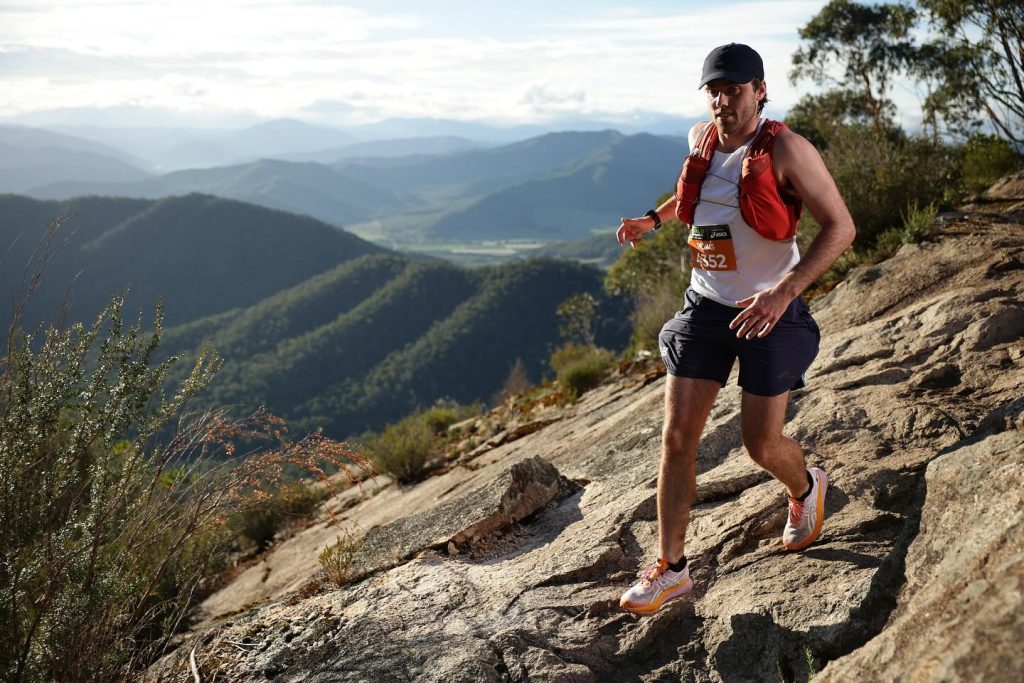
FROM INJURY TO THE TRAILS AGAIN
Bone stress injuries happen when our bones break down faster than they can rebuild. Over time tiny bits of damage add up, first causing irritation (stress reactions) and, if not addressed, progressing into stress fractures.
With so many people taking up running in recent years, we’re seeing more of these injuries than ever before. While stress fractures in the foot and shin are fairly well known, they can also occur higher up in the leg including the femur (thigh bone).
Today, we’re sharing the recovery journey of KJ, a dedicated runner who developed a Grade 4a femoral shaft stress fracture and made a full return to running.
KJ's Story
KJ, a 25-year-old long-distance runner, had just completed the Two Bays 56km Trail Run — a brutal, hilly race.
Eight days later, he noticed a vague tightness in his right thigh. It didn’t ease with warm-up or stretching, but wasn’t stopping him from running. After a hard track session, he experienced a sharp pain when sitting on the edge of a chair. Still, he kept training, thinking it was nothing serious.
A couple of days later, during another high effort run, the discomfort turned into a dull pain with every step in the warm-up. It eased during the harder efforts, but came back stronger in the cool-down.
By the time he came to Hartwell Physio, he could barely put weight through his leg. A quick test raised suspicion of a serious bone stress injury, and an MRI confirmed it. KJ had a Grade 4a femoral shaft stress fracture.
Step by Step Recovery
Step-by-Step Recovery
0–2 Weeks
- Non-weight-bearing on crutches to optimise bony healing.
- Light muscle activation work (eg: quad and glute squeezes, side-lying leg lifts).
- Swimming allowed with a pull buoy (to avoid kicking).
- Referral to a sports doctor and dietitian after signs of low energy availability (poor sleep, slow recovery between sessions, digestive issues).
- Key priority: increasing energy intake to help with bone healing.
2–4 Weeks
- Gradual return to partial weight-bearing (from two crutches down to one).
- Gentle leg strengthening (still more focused on activation, not heavy resistance).
- Continued swimming with pull buoy.
- Clinical Pilates to work on core stability.
4–8 Weeks
- Walking without crutches but limiting unnecessary extra walking.
- Strength training in the gym now the focus (bodyweight first, then adding weight).
- Key exercises: squats, step-ups, deadlifts, hip thrusts, calf raises, and hip stability work.
- Extra attention given to quad strength, especially eccentric control.
- Stationary bike and swimming with kicking reintroduced.
8–10 Weeks
- Repeat MRI showed the bone had fully healed.
- Strength testing showed only small differences between legs, but hopping power was still down.
- Two extra weeks spent on plyometrics (jumping drills) before returning to running.
- Gym progressions continued with a much bigger emphasis on single leg exercises.
10 Weeks+
- Commenced a structured return-to-run program beginning with 1-minute intervals
- Slowly rebuilt running volume before adding speed sessions.
- Increased cadence to reduce stress on the thigh bone.
- Kept up gym work twice a week and plyometrics once a week.
Back Stronger Than Ever
At 6 months post-injury, KJ was back to his full running load, pain-free and feeling stronger than before. His energy levels and recovery had improved dramatically thanks to better nutrition and training balance. He’s now setting his sights on more big trail runs in 2026.
Key takeaways for runners:
- Don’t ignore persistent aches, especially deep bone pain that does not warm up.
- Bone health depends on both training load and energy availability.
- Recovery is not just rest, it requires adequate refuelling and targeted strength exercises.
Author: Tom Miller
Physiotherapist and Long Distance Runner
Related Blogs:
How to Avoid Common Running Injuries
@hartwell.physio Tom’s here to talk through how he improved his running technique to avoid injury and improve overall performance🏃For him, a lot of it was to do with an increase in cadence… to see what you need to work on, come into the clinic for a running assessment! 🙌 #runningtechnique #runninginjuryprevention #foryoupage #cadence #runningform






